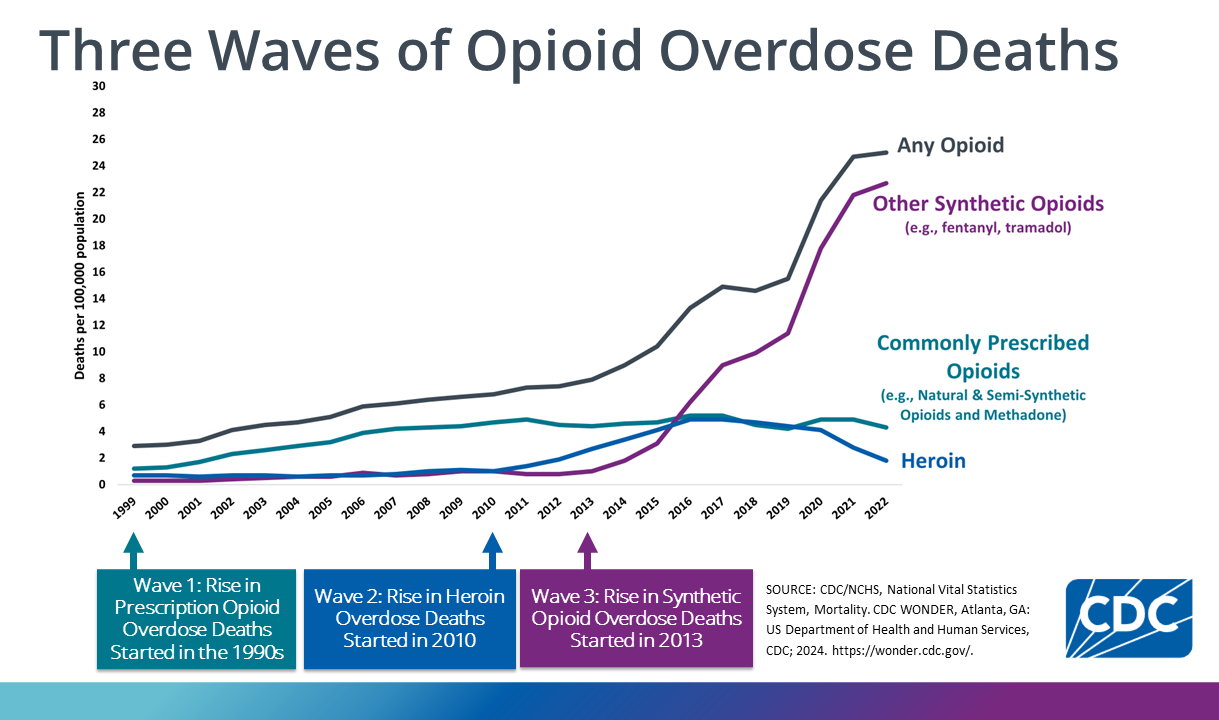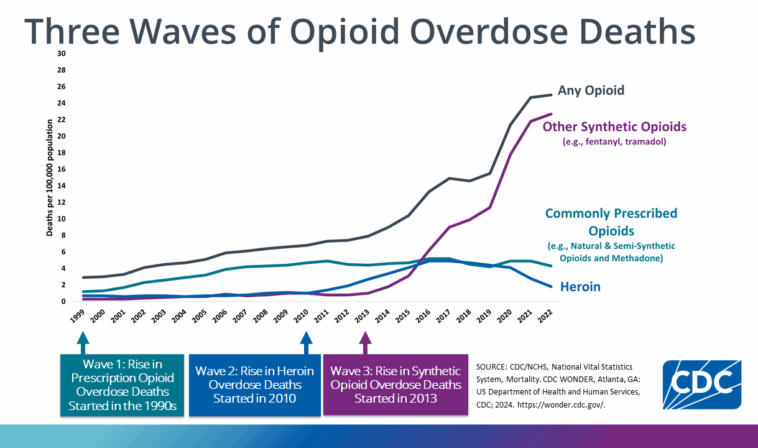
Promising Decline in Overdose Deaths: A Closer Look at Recent Trends
Recent federal data showing a 27% drop in drug overdose deaths across the United States has stirred both hope and cautious reflection. Although the new numbers indicate roughly 30,000 fewer deaths compared to last year, the underlying issues remain loaded with problems that require careful attention. As we take a closer look at these figures, it becomes clear that while the overall trend is encouraging, there are still many tangled issues to be resolved in our approach to addiction and public health.
In this opinion editorial, we want to dig into the various angles behind this drop. We will examine how synthetic opioids, especially fentanyl, continue to be a prominent factor in overdose fatalities despite public awareness campaigns and improved access to lifesaving antidotes. We will also talk about the nerve-wracking uncertainties posed by potential cuts in funding from federal programs, the critical role of drug education, and the need for community response initiatives. It is a story of progress combined with challenges that remain overwhelming as long as the core causes of drug dependency persist.
Examining the Tricky Parts of Fentanyl’s Impact
Fentanyl, a synthetic opioid, remains central to the ongoing overdose crisis. Even though the overall death rate has dipped, the involvement of fentanyl in these tragedies is a reminder that not all issues are being resolved. Many of the reduced fatality numbers can be attributed to increased awareness regarding the dangers of such potent drugs. However, the confusing bits lie in the distribution and unknowingly high potency of fentanyl that continues to permeate the illicit drug supply.
The tricky parts include:
- Hidden Potency: Fentanyl is up to 100 times more potent than morphine. This hidden strength makes it difficult for users to gauge safe dosages, leading to dangerous overdoses even among those who have used opioids safely in the past.
- Adulteration of Other Drugs: Fentanyl is often mixed with other substances without the user’s knowledge, which further complicates harm reduction efforts.
- Lack of Consistent Information: Although public campaigns are on the rise, the subtle details about how fentanyl infiltrates drug markets have not been sufficiently communicated to all communities at risk.
These subtle parts highlight how fentanyl’s disguised risks continue to contribute to overdose deaths, despite improvements in emergency responses and public education. The multilayered nature of the problem requires stakeholders to consider every fine shade of this crisis when shaping policies and patient outreach programs.
Managing Your Way Through Public Health Funding Challenges
Public health initiatives, especially those focusing on addiction recovery, are super important elements in reducing overdose deaths. Yet, the landscape is currently full of problems as potential funding cuts loom on the horizon. The Trump Administration’s proposed cuts to programs that support drug addiction treatments have raised concerns among experts and community leaders alike.
Dr. Alice Feller, a clinical psychiatrist and addiction specialist, has warned that reduced funding could derail the progress made over the past few years. The hesitation is not without reason: once financial support declines, the full range of services offered to drug addicts could be drastically diminished, turning progress into a temporary lull. This possibility underscores the nerve-wracking implications of shifting political priorities and the importance of sustaining robust support structures.
Below is a table that outlines key aspects of public health funding and its influence on overdose prevention:
| Funding Area | Current Status | Potential Impact of Cuts |
|---|---|---|
| Addiction Treatment Programs | Expanded Services | Reduced access to medications and counseling |
| Prevention and Education Campaigns | Widely implemented | Lower community awareness and prevention capacity |
| Emergency Response Measures (e.g., Narcan availability) | Increasing Access | Slower response times and increased fatality risks |
This table emphasizes that while the numbers might currently be trending in the right direction, without sustained financial resources, the current low point in overdose deaths may quickly reverse. Thus, it is crucial for local and national policymakers to ensure that the emergency measures and outreach services remain robust even in the face of potential budget cuts.
Effective Strategies That Work: The Role of Narcan and Overdose Reversal Medication
One of the critical breakthroughs in recent years has been the increased availability of Narcan, an opioid reversal medication that can rapidly counteract the effects of opioid overdose. Narcan’s easy accessibility has certainly played into the drop in overdose fatalities. With more communities stocking this drug, there is tangible hope that more lives can be saved in moments of acute crisis.
There are several key strategies that have led to this success:
- Wider Distribution: Narcan is now available not only in hospitals and emergency services but also found in community centers, public health clinics, and even in some schools.
- Training Initiatives: Many states have launched comprehensive training programs aimed at teaching ordinary citizens how to administer this life-saving drug during emergencies.
- Public Awareness Campaigns: The spread of accurate, easy-to-understand information about the signs of an overdose has helped more bystanders take the correct actions swiftly.
These initiatives reveal that while the improvement in overdose death statistics is indeed promising, success depends on continuing to push these essential measures forward. The progress made with Narcan is a testament to what can happen when communities and public health organizations work together to steer through the complicated pieces of addiction-related health issues.
Drug Education and Community Outreach: Digging Into the Nitty-Gritty of Awareness
The role of drug education in preventing overdoses cannot be overstated. Stephanie Siete, a drug education consultant who has been actively working with individuals battling addiction in the Phoenix area for over 25 years, reminds us that awareness and education are as super important to sustaining these improved numbers as emergency response measures are.
For many, the drop in overdose deaths represents a step in the right direction, but it does not erase the struggles of those still battling drug dependency. There remains a pressing need for widespread, community-based education that reaches out to individuals affected by the crisis. These efforts must focus on:
- Mental Health Resources: As many addiction cases are rooted in high levels of anxiety, stress, and depression, close relationships between mental health professionals and community outreach programs are necessary to provide holistic support.
- Skill-Building Workshops: Many initiatives now offer skills training, from stress management workshops to vocational programs, all aimed at providing alternatives to drug use.
- Peer Support Groups: Sharing experiences in a safe, supportive environment can make a difference in how individuals manage their crises.
These subtle parts of community outreach serve as the backbone for continued improvement. When communities work together to get into the nitty-gritty of drug education and support, they not only help reduce overdose deaths but also pave the way for long-term recovery and social reintegration.
The Overwhelming Challenge of Addressing Addiction in a Changing Landscape
While the drop in overdose fatalities is a heartening sign, it also brings to focus the larger, nerve-racking challenge of tackling addiction in an ever-evolving drug landscape. The crisis is full of problems that stretch beyond simple statistics. The shifts in drug trends, the dynamic nature of illicit drug markets, and the ever-changing social conditions all contribute to a scenario that is as intimidating as it is layered.
Some of the key challenges include:
- Changing Patterns of Drug Use: With new synthetic drugs emerging faster than they can be regulated, the drug market is constantly in flux.
- Social and Economic Factors: Many people turn to drugs as a way to cope with economic hardships or social isolation, especially in times of crisis.
- Stigma and Misunderstanding: Despite progress in public health messaging, there remains a significant stigma around drug addiction, which can hinder those in need of help from seeking support.
These factors, coupled with the potential for reduced funding in the near future, create a tenuous balance. For every success in preventing an overdose death, there is an equal weight of twist and turns in the ongoing struggle to address the root causes of addiction. It is imperative for all stakeholders—government, healthcare providers, educators, and community groups—to work in unison to keep the upward trajectory in recovery from reversing.
Digging Deeper Into the Role of Synthetic Opioids in Today’s Crisis
Even with noticeable improvements in interventions, synthetic opioids remain a deeply entrenched issue in today’s drug landscape. The prominence of fentanyl in drug overdose cases is a stark reminder of how tangled issues can delay overall progress. Despite numerous public ad campaigns emphasizing the dangers of these substances, the clandestine nature of drug distribution networks continues to present significant challenges.
Several aspects add to the overwhelming complexity of this matter:
- Supply Chain Disruptions: Criminal networks have adapted quickly, finding new ways to incorporate fentanyl into various illicit drugs, making it harder to control the spread.
- Detection and Regulation: Law enforcement and regulatory agencies grapple with ensuring that new batches of synthetic opioids are caught before they cause harm, particularly when the supply is nimble and rapidly shifting.
- Public Education Gaps: While public messaging about the dangers of fentanyl has improved, the fine points of how it affects different populations still require more tailored educational efforts to be truly effective.
Given these difficulties, addressing synthetic opioids holistically becomes a matter of coordinating interventions on multiple levels—from international cooperation among law enforcement agencies to local community education and emergency response enhancements. Only by finding your way through these complicated pieces can society hope to reduce the impact of these insidious substances over the long term.
Community Action: Driving Change Through Local Initiatives
At the heart of any significant public health breakthrough lies proactive community action. Local initiatives have played a super important role in curbing the overdose crisis. By mobilizing resources at the grassroots level, communities have managed to stir a transformation in the way drug addiction and overdose prevention are approached.
Some successful strategies include:
- Neighborhood Outreach Programs: Many communities have created local support networks where residents can receive information, assistance, and referrals to addiction treatment services.
- Partnerships with Local Law Enforcement: These collaborations have resulted in increased monitoring and better data sharing, making it easier to target high-risk areas.
- Community Health Fairs: By hosting regular health fairs, local organizations have provided residents with direct access to Narcan, addiction counseling, and mental health services.
- School-Based Education Programs: Initiatives that incorporate drug education into school curricula have been effective in teaching young people about the dangers of opioid misuse and synthetic drugs.
Each of these approaches plays a critical role in creating a supportive environment where individuals can seek help without fear of judgment. The collaborative efforts at the community level not only help save lives in the short term but also contribute to reducing the long-term societal and economic burdens associated with drug addiction.
The Interplay of Politics and Public Health: A Cautionary Tale
Politics has always had a profound effect on public health policies, and the current landscape is no exception. Political decisions regarding public health funding and policy adjustments have a direct impact on the resources available for addiction prevention and recovery efforts. The potential cuts mentioned by experts like Dr. Alice Feller serve as a powerful reminder that progress in saving lives can be quickly undone by shifts in government priorities.
Key considerations include:
- Legislative Support for Funding: Ensuring consistent support for programs such as addiction treatment and preventive education is crucial to sustaining the downward trend in overdose deaths.
- Policy Stability: Frequent changes in policies can lead to disruptions in services, undermining years of progress. Stability in public health policies is needed to build long-term, effective programs.
- Advocacy and Activism: Community advocacy plays a vital role in holding elected representatives accountable. By demanding transparency and consistent funding, citizens can help ensure that lifesaving measures remain intact.
These considerations underscore a delicate balance. While the present data gives us reasons to feel a glimmer of hope, the political environment remains tense, loaded with issues that could reverse current gains if not managed prudently. The interplay of politics and public health reminds us that progress is neither automatic nor impervious to setbacks.
Innovative Approaches in Addiction Treatment and Recovery
Amidst the challenges, there are also numerous innovative approaches that have begun to reshape addiction treatment and recovery. The evolution of treatment modalities is a testament to the resilience and creativity of healthcare providers and researchers alike. From integrating mental health services with addiction treatment programs to using technology-driven solutions for monitoring and support, the landscape of recovery is undergoing a transformation.
Innovative methods include:
- Telemedicine for Addiction Therapy: Remote health services have enabled more individuals to access counseling and follow-up care without the intimidation often associated with in-person visits.
- Mobile Recovery Apps: Smartphone applications that provide real-time support, track sobriety, and even connect users with local support groups have become invaluable tools for those in recovery.
- Holistic Health Programs: Integrating physical, mental, and social health in treatment plans helps to address the underlying reasons behind drug use. This multidimensional approach can offer a more sustainable path to recovery.
- Peer Mentorship Initiatives: Programs that pair recovered individuals with those currently struggling with addiction have been shown to significantly boost recovery rates through shared experience and accountability.
These approaches are essential in moving beyond merely reacting to overdoses as emergencies. Instead, they offer a proactive framework for recovery that helps individuals rebuild their lives over the long term. When these innovations are implemented alongside strong community support and political backing, the odds of maintaining and furthering the decline in overdose deaths become much more favorable.
The Role of Empathy and Social Support in Recovery
While clinical interventions and government policy form the backbone of addiction recovery, the role of empathy and social support cannot be understated. Every life lost to overdose is a personal tragedy that ripples across families and communities. Thus, rebuilding the social fabric is as essential as any medical or policy-based intervention.
Building empathy and social support can be approached through:
- Family Education Programs: Educating family members about the struggles of addiction and recovery can foster an environment of understanding and reinforce the support network around the patient.
- Community-Based Counseling: Local counseling centers and support groups provide safe spaces where individuals can share their challenges without stigma, thus enhancing the recovery process.
- Public Testimonies and Storytelling: Sharing success stories and personal experiences through media campaigns can help humanize the issue of addiction and dismantle harmful stereotypes.
Incorporating these elements into the broader public health strategy can contribute significantly to reducing the overall toll of drug addiction. When communities take the time to acknowledge the human side of these statistics, they stand a better chance of making a sustainable difference, one life at a time.
Looking Ahead: Sustaining Progress in a Dynamic Environment
The present drop in overdose deaths gives us temporary cause for celebration, but it is also a reminder that the journey toward a sustained decline is full of twists and turns. The positive outcomes observed this year are the product of several converging factors: improved emergency response with Narcan, community-based interventions, enhanced drug education, and innovative approaches to treatment. However, the continuation of this trend is not guaranteed.
Looking ahead, it is essential to consider the following key areas to maintain progress:
- Sustainable Funding: Ensuring that addiction treatment and prevention programs continue to receive adequate financial support regardless of political changes is crucial.
- Targeted Public Health Campaigns: Continued investment in public education campaigns that focus on the subtle details of substance abuse and recovery can further diminish the impact of synthetic opioids.
- Enhanced Data Collection: Ongoing, detailed, and community-specific data collection will help policymakers and community leaders keep track of emerging challenges and tailor interventions accordingly.
- Collaboration Across Sectors: Building bridges between law enforcement, healthcare, educational institutions, and community organizations can create a multi-pronged approach that is better equipped to handle the ever-changing drug landscape.
By working together and focusing on both the immediate and long-term aspects of the overdose crisis, society can hope to build an environment where even the most overwhelming challenges are met with coordinated and compassionate responses. The goal is to establish a durable system that not only reacts to crises but also prevents them from occurring in the first place.
Concluding Thoughts: A Cautiously Optimistic Future
In conclusion, the recent data indicating a decrease in drug overdose deaths is a cause for cautious optimism. The drop, which represents the culmination of community efforts, improved emergency measures like Narcan, and heightened public education, is a sign that coordinated public health actions can make a tangible difference. However, it also serves as a reminder of the ongoing, complicated battle against synthetic opioids and the challenges posed by political and funding uncertainties.
As we digest these trends, it’s important not to lose sight of the broader picture. Every statistic represents a human life—a story with family, friends, and community ties. The recovery of these individuals and the subsequent healing of communities depend on the continuous push for better, more empathetic policies and the effective application of innovative treatment modalities. Maintaining the downward trend in overdose deaths will require not only medical and educational advances but also a concerted effort to tackle the overwhelming challenges that come with changing drug patterns and uncertain political climates.
Ultimately, while the journey remains full of tricky parts and nerve-wracking uncertainties, society has shown that when local communities, health professionals, and policymakers work together, significant progress is possible. Now is the time to double down on efforts, ensuring that the gains made are not only preserved but also built upon, inspiring further actions that can help steer through the tangled issues of addiction and overdose in the years to come.
The path forward is challenging, but with empathy, innovation, and unwavering commitment, it is possible to create a safer, healthier future. It is our collective responsibility to support those caught in the midst of addiction and to champion the policies and community efforts that have already shown promise in reducing overdose deaths.
Let us all remain vigilant and proactive as we address this persistent issue. The road ahead may be intimidating, but each positive step—every life saved—serves as a beacon of hope amid the complexities of modern drug challenges. Together, by focusing on education, community engagement, and sustainable policy, we can help secure a future where overdose deaths become a rarity rather than a common tragedy.
Originally Post From https://www.azfamily.com/2025/05/15/drug-overdose-deaths-drop-across-us-2024/
Read more about this topic at
CDC Reports Nearly 24% Decline in U.S. Drug Overdose …
Provisional Drug Overdose Death Counts


